Scandinavian Interior Design: A Harmonious Blend of Comfort, Functionality, and Aesthetics
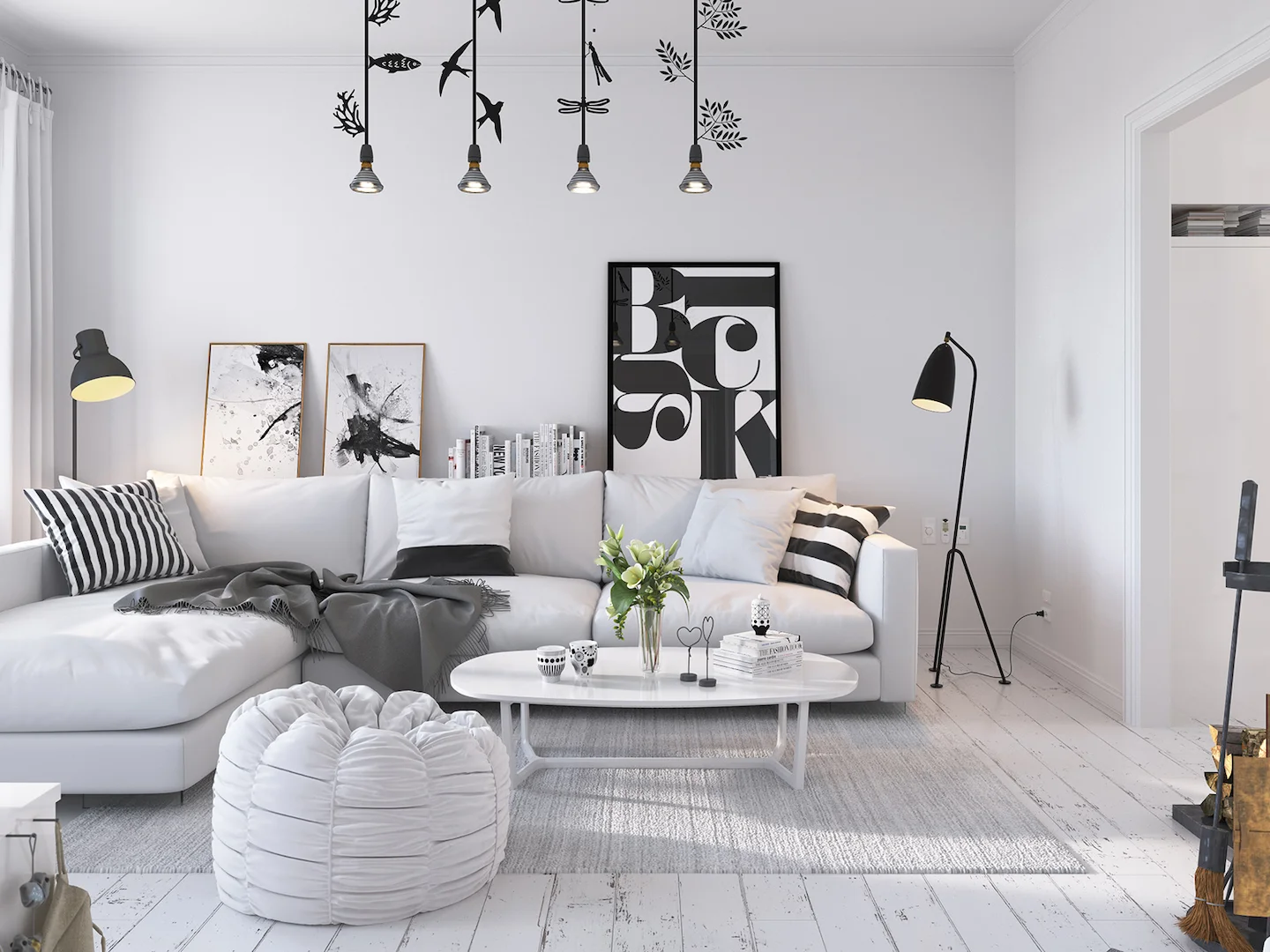
Opposed to the rapid, unrelenting pace of our contemporary existence, the calming influence of Scandinavian interior design has manifested as a prominent style, and its allure lies in the refreshing simplicity, functionality, and an earthly color scheme that mirrors the Nordic environment. This design ideology has its roots in the early 1900s, springing up from the Nordic territories of Denmark, Sweden, and Norway. The lengthy, gloomy Nordic winters inspired an intrinsically practical design strategy yet radiated a unique warmth and comfort, bathing interiors with a tranquil, serene luminescence.
The appeal of Scandinavian design resides in its offer of a balanced, clutter-free existence. This style transcends merely attaining a particular aesthetic; it’s about crafting spaces that elevate our living standards. Anchored in minimalist principles, it advocates that designs should primarily fulfill their intended purpose, dismissing unnecessary adornments. Yet, the design outstrips simple functionalism, infusing inherent elegance and a profound kinship with nature. At its core, Scandinavian interior design offers a captivating fusion of aesthetics, comfort, and mindfulness, thus explaining its timeless charm globally.
Rustic Scandinavian Interior Design
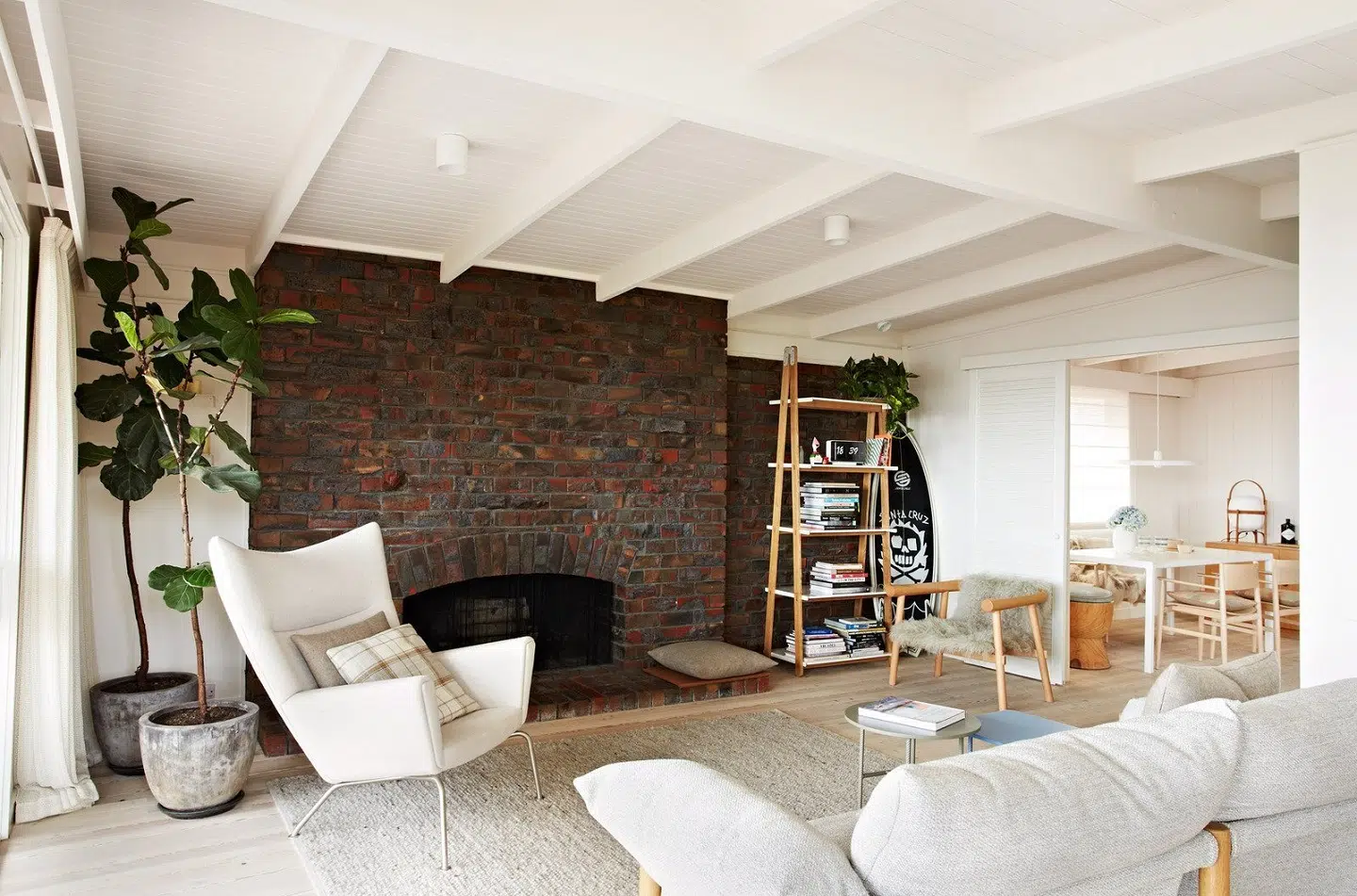
The rustic Scandinavian design presents an enticing offshoot of the Nordic design tree, seamlessly blending the soft minimalism of Scandinavian design with the strong allure of rustic themes. Imagine a charming cottage nestled within a snow-clad Nordic landscape, the interiors bedecked with homey and well-loved furniture pieces that radiate an irresistible invitation of warmth and comfort. This vision embodies the quintessence of rustic Scandinavian design.
Materials that narrate a tale of their deep-rooted connection with nature are at the heart of this design strategy. Untreated, natural materials such as aged wood, stone, leather, and wool take precedence. The furniture, often crafted by hand, showcases an earthy, rugged character while retaining the streamlined simplicity inherent to Scandinavian design. The color scheme leans towards earthy tones – variations of grays, browns, creams, and whites, punctuated at times with soft greens and blues.
One unique characteristic is the integration of traditional crafts and antique pieces, providing a nostalgic touch and accentuating the importance of authenticity and artistry. Art and decorative items often draw inspiration from the natural environment, showcasing Nordic landscapes, plants, and wildlife. Fireplaces are a regular feature, epitomizing warmth, and communal spirit.
Rustic Scandinavian design goes beyond being merely a design choice. It symbolizes a way of life that reveres nature and appreciates the soothing beauty inherent in simplicity and genuineness. It urges us to value the imperfections accompanying handmade, weathered items, each marking a tale of a less complicated, unhurried existence. To achieve this design aesthetic, careful selection of furniture and décor that resonate with these ideas is key. Choose natural fabrics, invest in handcrafted items, and prefer aged or reclaimed wood. Remember to retain a sense of spaciousness and simplicity to allow each piece to narrate its story. The end product? A living room that’s visually rustic and provides a warm, comforting sanctuary from the hectic outside world.
Modern European kitchen designs offer the perfect design for each house. It has solutions for all kinds of kitchen size and layout.
Modern Scandinavian Interior Design
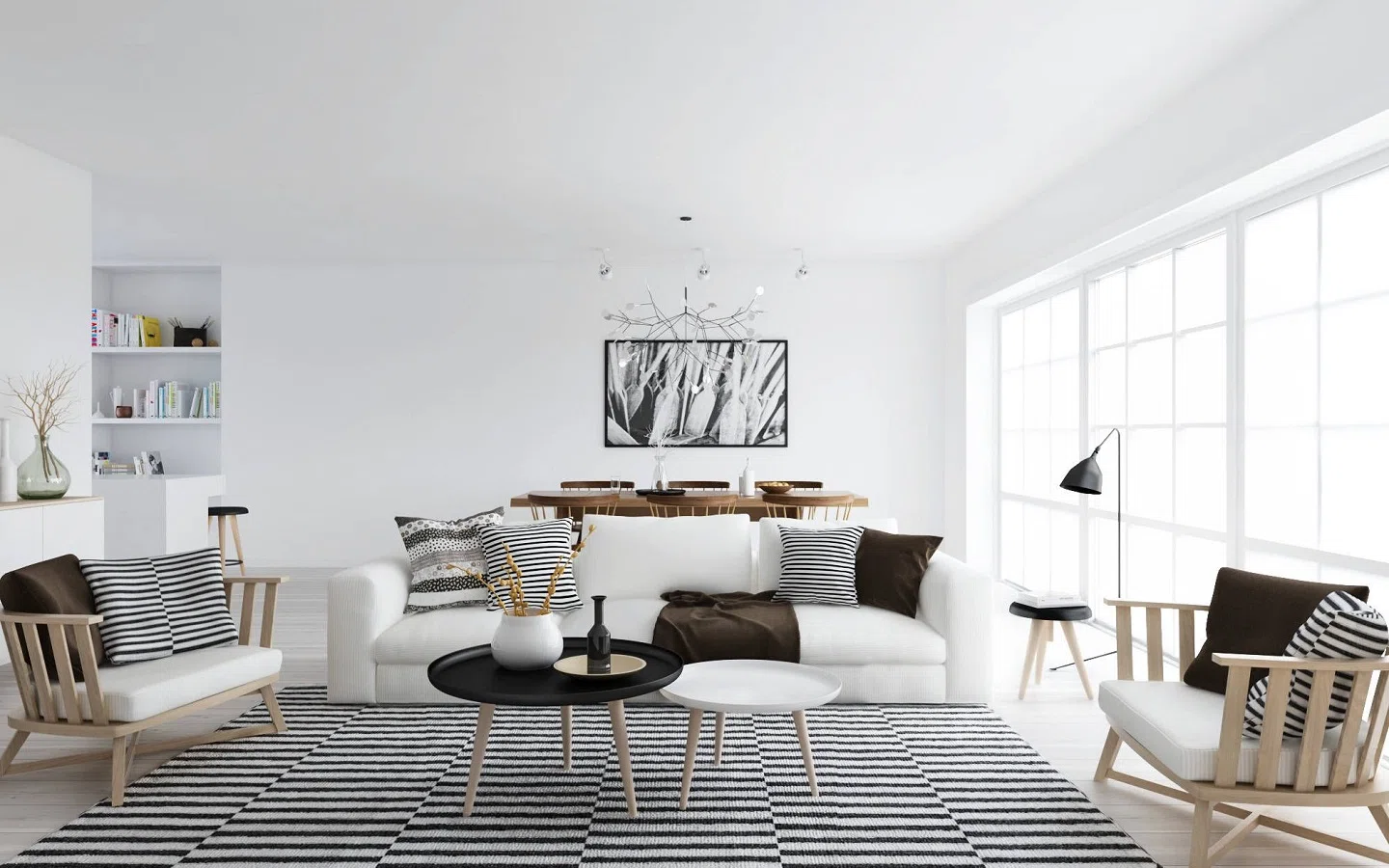
As we journey through the Scandinavian design chronology, we encounter a fascinating interaction between enduring Nordic principles and contemporary inspirations. The modern Scandinavian design style bears witness to this seamless integration. It salutes the fundamental Nordic values of simplicity, functionality, and nature-centric aesthetics while welcoming modern design’s refining tendencies.
The interplay of traditional and contemporary in this design style crafts a captivating symphony of contrasts. Central to this design ethos is a deliberate equilibrium between minimalism and warmth. Contemporary elements introduce a crisper, more streamlined aesthetic characterized by new lines, geometric structures, and glossy finishes. However, these modern elements do not eclipse the inherent coziness and nature-infused aspects of traditional Scandinavian design.
Hallmarks of modern Scandinavian design encompass furniture with slender profiles and organic forms, lending a touch of sculptural beauty to the space. Materials continue to derive inspiration from nature, albeit with a contemporary flair. For example, the rustic appeal of unprocessed wood may find itself contrasted with the smooth, cold aesthetics of glass or metal.
Due to the region’s dim winters, lighting, a vital facet of Scandinavian design, adopts a modern edge. Show-stopping modern light fixtures often morph into the room’s central attraction. Yet, the warmth of the illumination remains, preserving the hygge fundamental to Scandinavian living.
While preserving the traditional inclination towards neutrals and soft, subdued shades, the color scheme may also entertain brighter color bursts in modern Scandinavian interiors, furnishing a vibrant contrast against the dominant minimalist landscape.
To manifest a modern Scandinavian ambiance in reality, contemplate furniture pieces that merge functionality with modern aesthetics, such as a slick, low-profile sofa or a coffee table with geometric accents. Team these with traditional elements like a cozy woolen rug or nature-inspired artwork. Utilize statement lighting fixtures that light up the space and contribute a sculptural component. Thoughtfully integrate color, introducing bright accents against a largely neutral backdrop.
For instance, a living room could sport a sleek, white sofa and a geometric coffee table in natural wood. A modern pendant light fixture could dangle overhead, radiating a warm glow. A subdued, pastel-colored rug on the floor and an abstract painting illustrating a Nordic landscape on the wall would complete the aesthetic.
Modern Scandinavian design, a very different kind of European interior design, with its fusion of traditional warmth and contemporary chic, beautifully epitomizes the timeless charm and evolving vitality of Scandinavian interior design.
Scandinavian Minimalist Interior Design
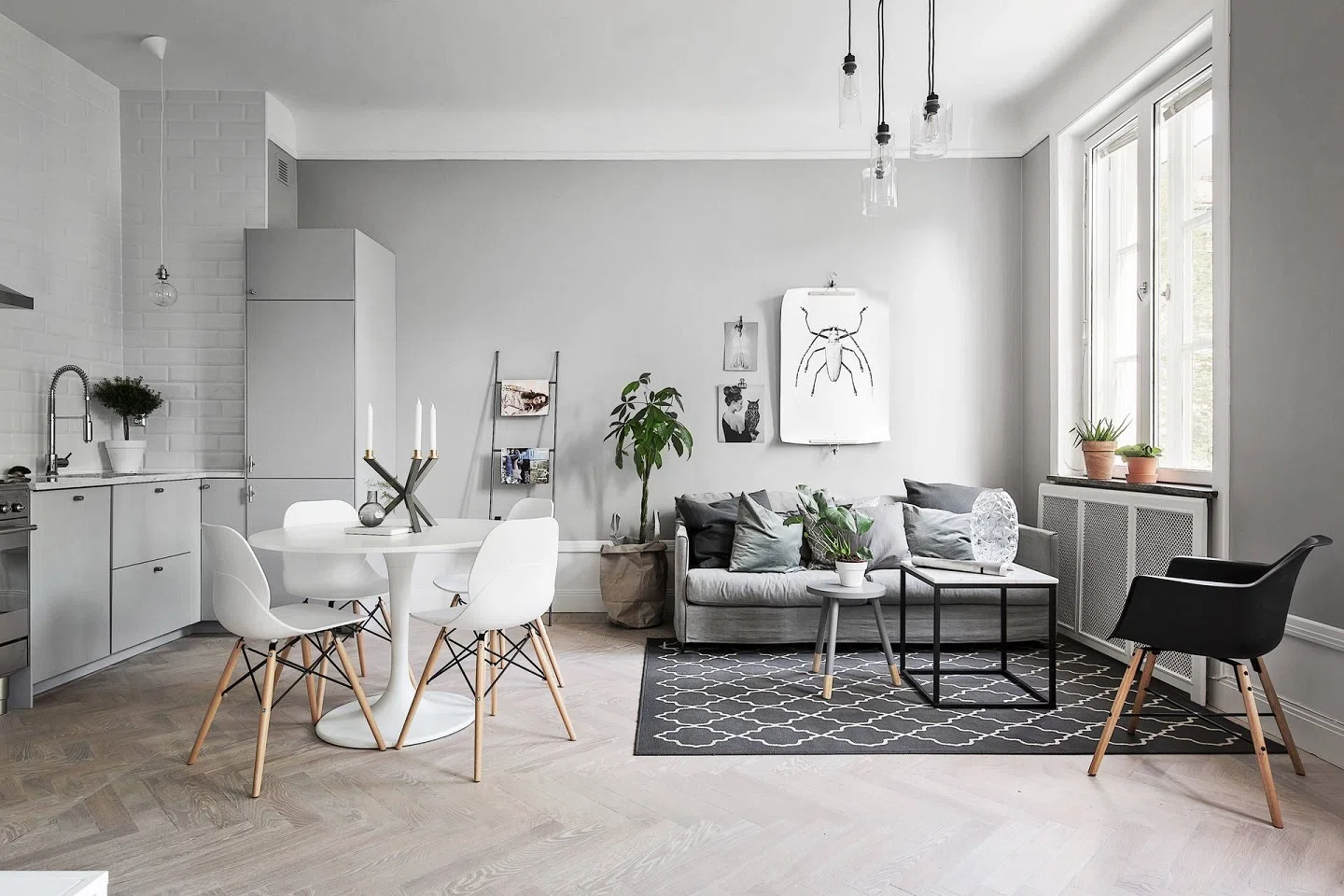
Scandinavian minimalism represents more than a simplistic aesthetic; it manifests a philosophical approach to life that champions simplicity, functionality, and a profound appreciation for the undecorated elegance of objects and spaces. It isn’t merely about elimination; it emphasizes careful selection, meticulous attention to detail, and profound respect for natural and human-made elements.
Contrary to the cold, austere spaces often associated with minimalism, Scandinavian minimalism takes a different route. It cultivates a warm minimalism, deploying a palette of subdued, earthy shades, harmonious lines, and natural textures to orchestrate spaces as welcoming as they are sparse. Functionality and aesthetics wed seamlessly, ensuring every element, every furniture piece, not only serves a purpose but also enhances the overall allure of the space. These features make minimal Scandinavian interior design a perfect choice for designing elegant modern small living room.
Hallmarks of Scandinavian minimalist design comprise a restrained color palette ruled by whites, grays, blacks, and earthy neutrals. The design retreats from heavy adornment, allowing materials’ clean lines and innate beauty to take center stage. Furniture frequently serves dual purposes, embodying the pragmatic spirit of the design philosophy. Light, particularly natural light, plays a key role, with minimal window treatments ensuring light permeates throughout.
To actualize this design:
- Initiate a decluttering process.
- Aim for a space devoid of non-essential items.
- For color, veer towards neutral and pastel shades, with white being the dominant tone.
- When selecting furniture, prioritize both functionality and form.
- Opt for streamlined pieces that offer practicality, such as modular sofas or storage solutions cleverly woven into the design.
Textures are crucial in preventing the minimalist space from appearing too sterile. Natural fabrics, wood grains, and plants can infuse warmth and depth. Lighting should be ample, focusing on maximizing natural light, complemented by gentle, ambient artificial lighting.
A Scandinavian minimalist living room might encompass a sleek, functional, yet elegantly designed white sofa paired with a coffee table in a graceful form, perhaps hewn from natural wood. A hand-woven rug in a neutral shade could introduce texture and warmth underfoot, and a few judiciously chosen indoor plants could add a dash of nature. Allowing natural light to suffuse through large, unadorned windows would cultivate a serene, inspiring space that breathes.
Fundamentally, Scandinavian minimalist design urges us to reduce, simplify, and discover joy and beauty in the essentials. It celebrates mindful living, underpinned by a deep respect for each component’s functional and aesthetic worth in our space.
Warm Scandinavian Living Room Interior Design
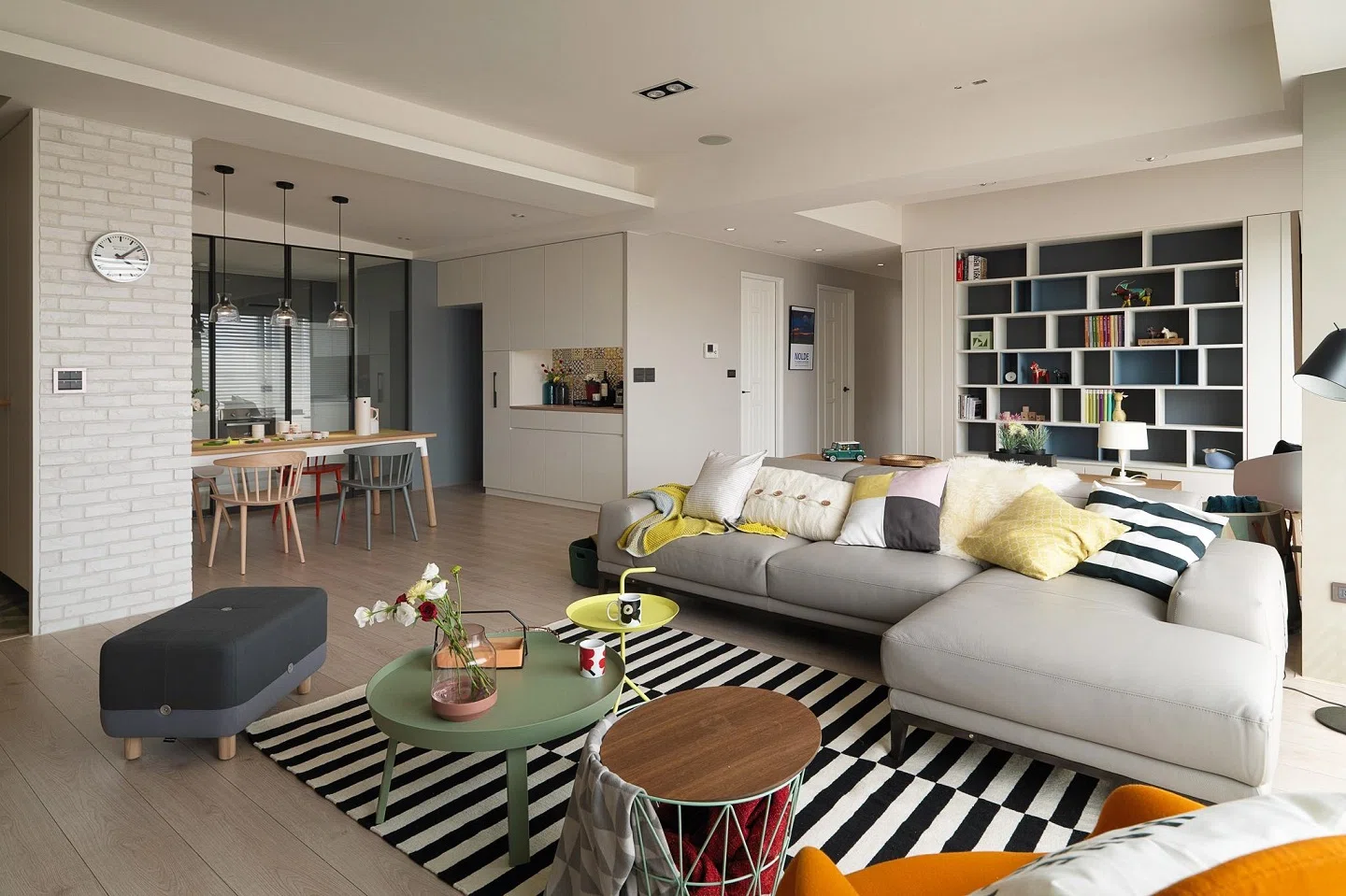
A Scandinavian living room embodies warmth, light, and tranquility, mirroring a lifestyle that values comfort, simplicity, and a bond with nature. This ethos saturates every design element, encompassing furniture, color schemes, lighting, and accessories.
Furniture in a Scandinavian living room balances comfort and function. Often, sleek, low-profile sofas and chairs feature, typically dressed in neutral tones, with natural materials like leather or linen. Tables and shelves, usually composed of wood or metal, are uncomplicated but sturdy, projecting a practical and minimalist aesthetic.
The color scheme generally orbits a palette of whites and grays, occasionally interrupted by blacks or earthy shades. Bursts of color may appear through textiles or artwork. Still, these tend to be subdued rather than vibrant, preserving the soothing ambiance.
Lighting is of the essence, often achieved through a mix of natural light and assorted light fixtures. Windows are usually bare to optimize sunlight, while candles, pendants, floor lamps, and table lamps craft a cozy atmosphere.
Imagine a living room with expansive, unadorned windows, a white, plush, low-profile sofa teamed with a wooden coffee table with clean lines. Perhaps a soft, gray rug underfoot, a couple of potted plants for a hint of green, and a vintage floor lamp radiating a warm, welcoming glow – this encapsulates the quintessential Scandinavian living room design.
Scandinavian Minimalist Living Room Design
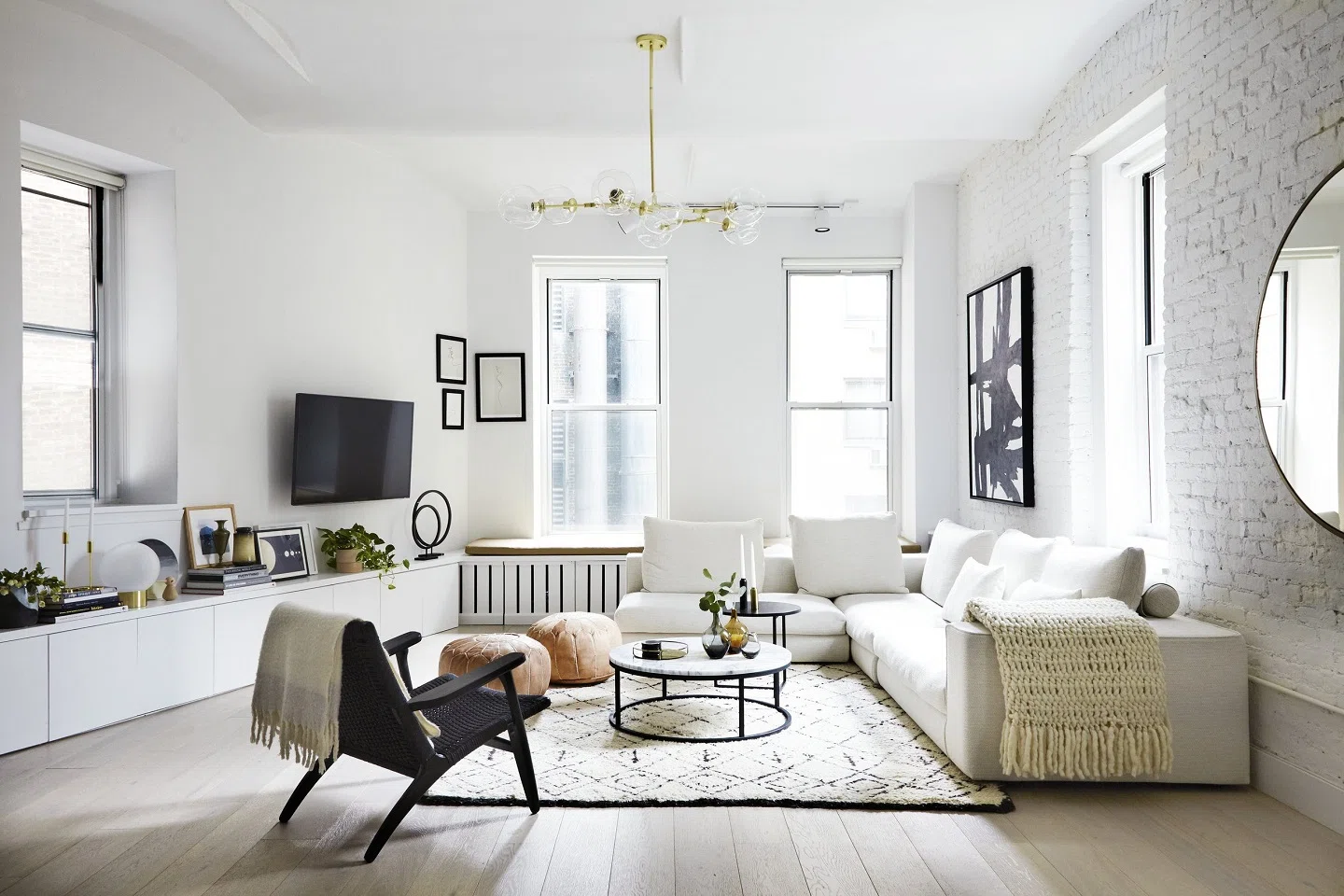
The Scandinavian minimalist living room concept enhances the inherent simplicity of Scandinavian design by infusing principles of minimalism. This design fabricates spaces that are visually appealing, functional, and free from clutter, mirroring a lifestyle that prioritizes mindful living.
Essential components in a Scandinavian minimalist living room encompass functional and elegantly designed furniture with clean lines, a neutral color scheme, minimal decor, warm natural light, and meticulously chosen accessories that inject warmth and texture without producing visual clutter.
Picture a living room with a sleek, white modular sofa and a geometric coffee table in unrefined wood. The walls, washed in a gentle, neutral shade, bear a solitary piece of abstract art that introduces a subtle dash of color. The windows, devoid of heavy treatments, invite abundant natural light, supplemented by a modern pendant light hanging overhead. A hand-woven rug in a muted hue introduces texture and warmth, while a carefully curated selection of hardcover books on the coffee table provides a glimpse into the homeowner’s personality. This room epitomizes the elegance of Scandinavian minimalist living room design.
Conclusion
With its diverse styles, Scandinavian interior design presents a vibrant tapestry of aesthetics that unites functionality, simplicity, and an undeniable allure. The design philosophy’s focus on crafting spaces that are not just visually appealing but also nurturing and enhancing life echoes deep-seated respect for quality, comfort, and the human necessity for harmony with our surroundings.
From rustic to modern and minimalist, each style offers distinctive interpretations of the fundamental Scandinavian design principles. The rustic style enchants with its earthy charm and nostalgic resonance of simpler times. The modern approach accommodates the sleek aesthetics of contemporary design without severing ties with traditional warmth and comfort. The minimalist style spotlights the beauty of simplicity and the profound elegance of essentials.
Scandinavian design’s global influence is indisputably potent, molding homes, public spaces, and design philosophies across the globe. Its enduring popularity lies in its ability to create environments that offer a tranquil sanctuary from the world’s turmoil. The design style’s capacity to evolve while remaining loyal to its roots keeps it relevant and inspiring.
In essence, Scandinavian interior design, in all its iterations, encourages us to embrace simplicity, functionality, and authenticity in our spaces, constructing a refuge that nurtures and elevates. It’s not merely a design style; it’s a lifestyle, a mindset with the potential to impact our well-being and quality of life profoundly.
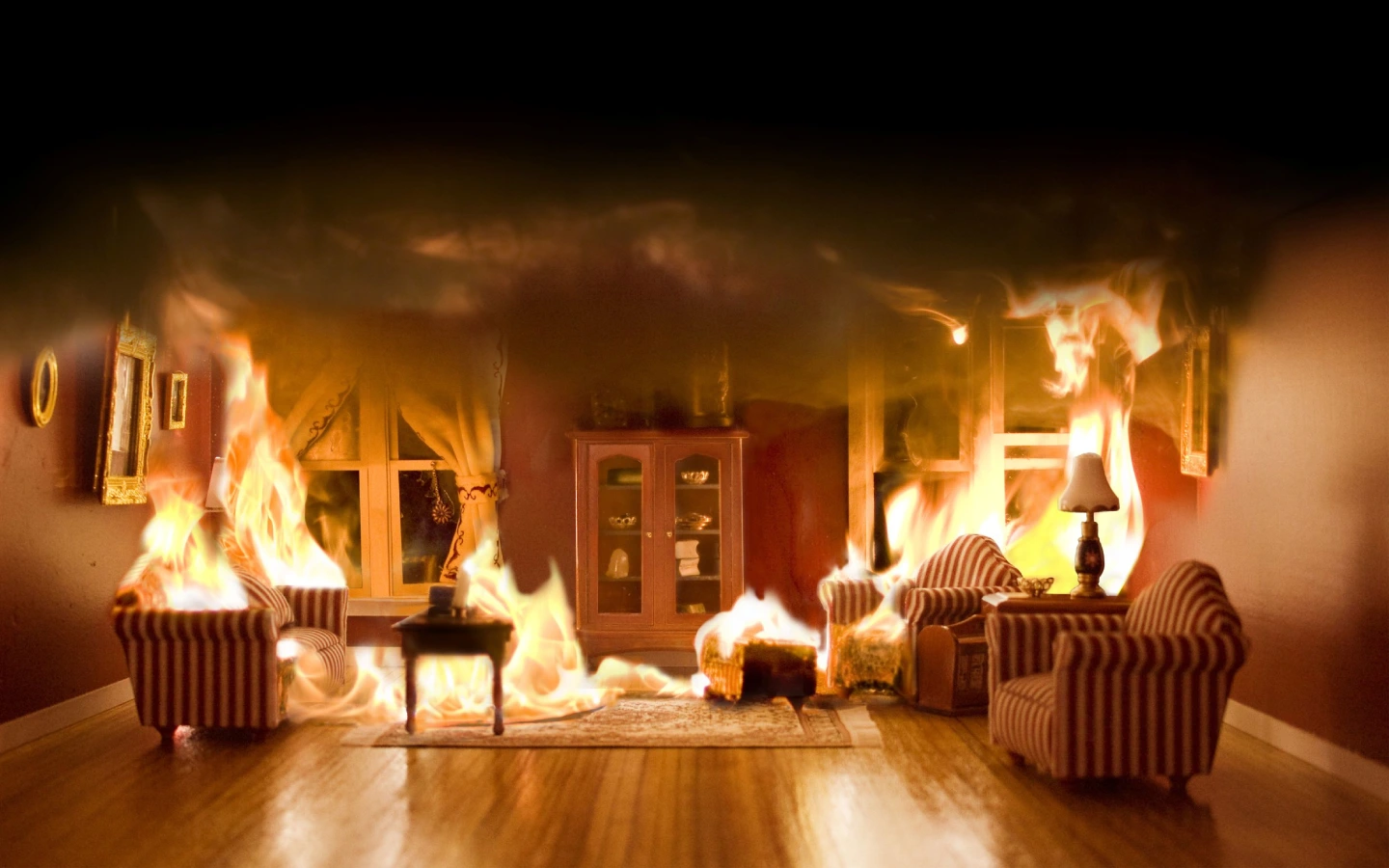
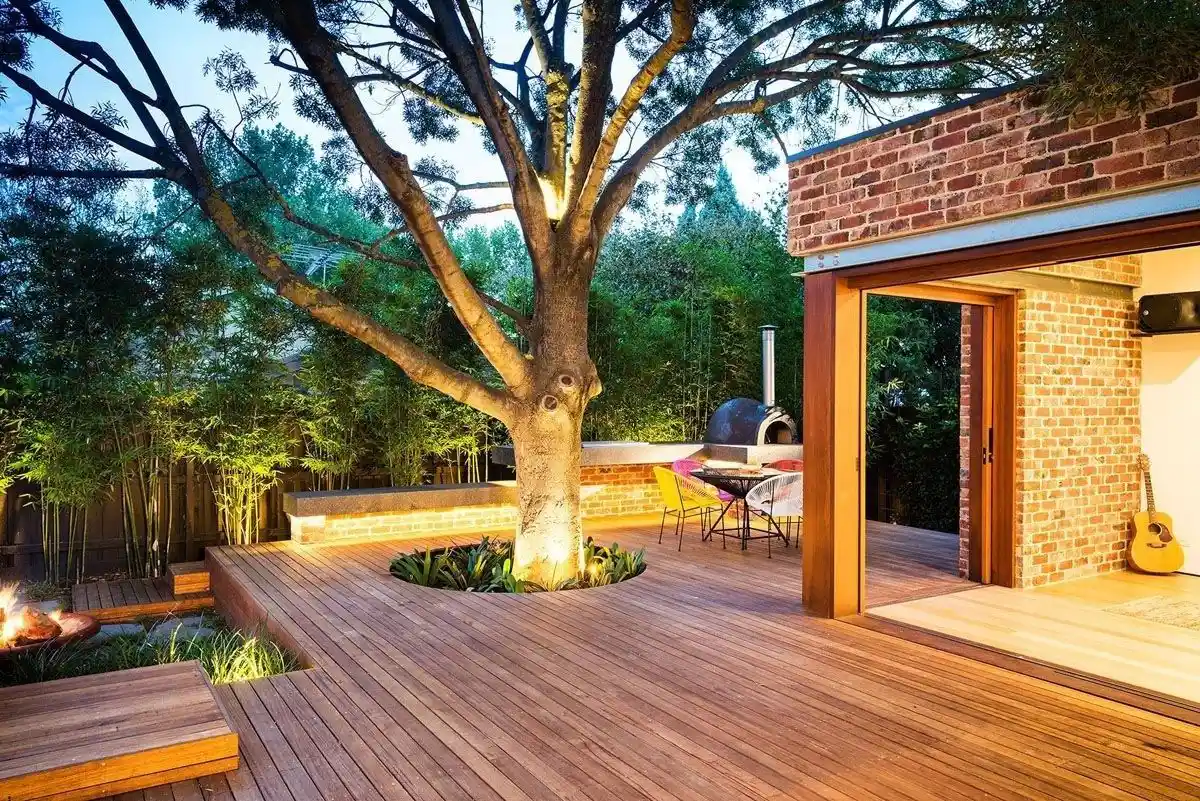

Did you find what you were looking for?